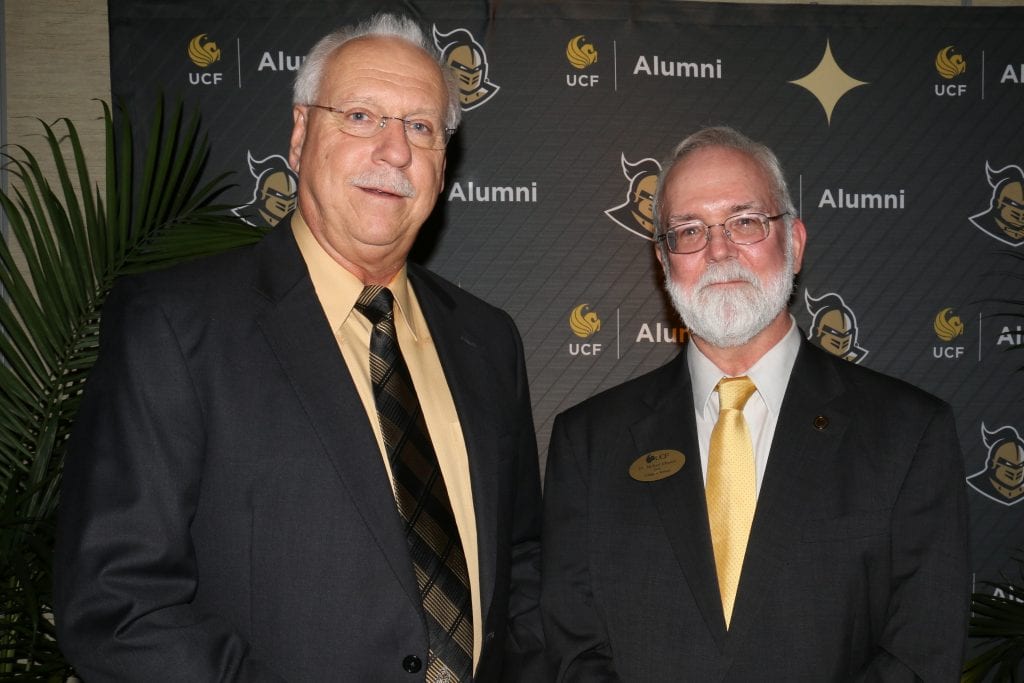The Probability to Lift Off

Jimmy Rudolph ’76 was hired to work at the Kennedy Space Center on NASA’s new Space Shuttle Program right after he graduated from Florida Technological University.
In a room full of old-school engineers who didn’t always trust computers, Jimmy made a name for himself after he learned a computer programming language in just one day. He was writing code the first week on the job.
“You used to have to write code on coding sheets, then the workers in the typing pool would create punch cards. Then you would take the cards, rearrange them in order and two days later your compiled code would print out error messages. Then you would start over with new coding sheets,” Jimmy said. “I found ways to do it faster and turned code around in a day when everyone else took a week.”
His mission was to fuel the launch vehicle for the space shuttle without causing damage or blowing anything up. As a statistics major, Jimmy didn’t have an extensive engineering or computer science background – in fact he was happy that he landed a job that seemed more interested in his secondary skills. Even though he began as a double major, the cost of creeping tuition bills forced him to sit down with an advisor to re-evaluate his specialization.
“At the time the statistics major option was new,” Jimmy said. “We looked at the curriculum and realized it was divided up into three portions: one third math, one third statistics and one third computer science. It was a versatile blend of all three.”
It took Jimmy and his team five years to code and test the control software set using the math model simulator that he also created.
“Several veteran engineers doubted that it was ever going to work, that we could never write something to do the loading for the launch vehicle and the three main engines. But I kept saying that we could do it,” Jimmy said. “I didn’t know any better because I was young and straight out of college. I was working with engineers who were veterans of the Apollo, Gemini and Mercury programs.”
Jimmy and his team pulled it off. The simulator helped prepare for the first-ever launch of the space shuttle in April 1981, with the world watching on TV.
“I worked with the team to put the astronauts into space. You could stand outside and watch the space shuttle go up. You could feel the sound waves hitting you and you’d hold your breath,” he said. “When the mission would be complete and the shuttle would land with a sonic boom, and I’d think, ‘Wow. That’s so cool. I helped do that.’”
And he did for 41 years. Jimmy moved into managerial roles, becoming the youngest manager at three supervisory levels. He was the Director of Safety, Quality and Mission Assurance for 12 years during the busiest time of space shuttle processing and eventually became the Vice President of Space Division APT Research. Reflecting back on his career, Jimmy recognizes a few places he needed to adjust his passion for excellent work, including too-high standards for co-workers and employees – and his own work ethic of 60 to 70 hours a week.
“I had to earn my way, but have more respect for others,” he said. “It was easier to handle the technical part, but I realized everyone can do some tasks really well, but not necessarily every task as well. So you have to assign people to the right tasks to the help the mission to succeed. My guide for balancing time is to work hard, have fun and respect others.”
Although Jimmy officially retired from Kennedy Space Center in May of 2017, he isn’t leaving the aerospace business entirely – he is available as a part-time consultant. Besides the software set he created that was used successfully for over 30 years, he is also proud of is his diploma – a Florida Technological University original.
“I was out of college a year or two when FTU became UCF,” Jimmy said. “The university called to see if I wanted a new diploma and I declined. But 40 years later that seems sort of ironic. Look at UCF now.”
